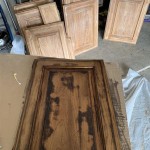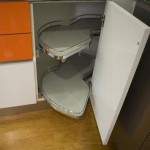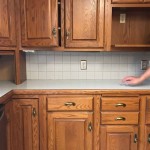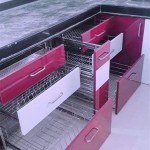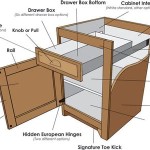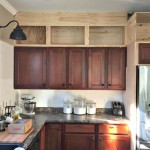How Far Apart Should Floating Kitchen Shelves Be?
Floating kitchen shelves offer a stylish and functional way to add storage and display space to your kitchen. They can be used to showcase your favorite dishes, cookbooks, or decorative items, while also offering a convenient way to store everyday essentials. However, determining the optimal spacing between these shelves is essential for maximizing their practicality and aesthetics. This article explores the factors influencing the ideal spacing for floating kitchen shelves, providing guidelines to help you achieve a functional and pleasing design.
Consider the Size and Shape of Your Items
The most crucial factor influencing the distance between floating shelves is the size and shape of the items you intend to store or display. For example, if you plan to use the shelves to display large plates or platters, you will need more vertical space than if you are storing spices or small jars. Similarly, if you are storing items that are tall and narrow, you may want to consider closer spacing than if you are storing short and wide items.
To determine the optimal spacing, consider measuring the items you plan to store and add a few inches of clearance. This will ensure that you have enough space to easily access and remove items without them bumping into each other. It is also important to consider the weight of the items. If you are storing heavy objects, you may want to consider using stronger shelf supports or opting for a closer spacing to prevent bowing or sagging.
Account for Functionality and Ease of Access
Beyond the size of your items, consider how you will use the shelves. For example, if you are using shelves to store frequently used items like spices or mugs, you’ll want to make sure they are easy to reach and accessible without having to climb or stretch excessively. In this case, closer spacing may be more practical. On the other hand, if you plan to use your shelves primarily for display purposes, you may prefer a larger distance between them to create a more spacious and airy look.
When considering functionality, it is also worth thinking about the visual impact of the shelves. Too close a spacing can make the shelves feel cluttered and cramped, while too much space can make them feel sparse and uninspired. Finding a balance between functionality and aesthetic appeal is key to achieving the desired look and usability for your kitchen.
Visual Harmony and Architectural Considerations
The placement and spacing of floating shelves should also be considered in relation to the overall design of your kitchen. Consider the height of your countertops, the size and shape of your backsplash, and the existing cabinetry. The spacing of your shelves should complement these elements, creating a visually pleasing and cohesive look.
For example, if you have a high backsplash, you may want to position your top shelf closer to the ceiling to avoid it feeling cramped. Similarly, if your kitchen cabinets are tall and narrow, you may want to use narrower shelves with closer spacing to maintain a consistent visual flow. Furthermore, think about the architectural style of your kitchen. A traditional kitchen may benefit from a more symmetrical and evenly spaced arrangement, while a contemporary style might benefit from a more asymmetrical and eclectic approach.
General Guidelines for Spacing
While there are no hard and fast rules when it comes to spacing floating kitchen shelves, here are some general guidelines that can help you get started:
- For everyday items: Aim for 8-12 inches between shelves. This allows for easy access and storage of frequently used items like spices, jars, or mugs.
- For larger items like plates or platters: Consider 12-18 inches between shelves. This provides ample space to display and store larger items without them touching.
- For decorative items: Allow for 10-14 inches of space. This offers a balance between display space and a clean visual aesthetic without appearing too crowded.
Ultimately, the best way to determine the ideal spacing for your floating kitchen shelves is to experiment. Measure your items, consider your storage needs, and plan your placement to ensure a comfortable and visually appealing outcome. Remember, you can always adjust the spacing of your shelves later if you find that they are too close or too far apart.

Details On Our Floating Kitchen Shelves Emily A Clark

Diy Kitchen Floating Shelves Lessons Learned Angela Marie Made

Floating Kitchen Shelves Ideas Advice Expert Tips

Kitchen Ideas Floating Shelves Hurd Honey

Tips For Kitchen Shelves With Floating Shelf Placement Ideas

Add A Minimalist Look To Your Space With Floating Shelves Cr Construction Resources

How To Hang Floating Shelves First Remove A Kitchen Cabinet

Installing Open Shelving In Kitchen Taryn Whiteaker Designs

Diy Kitchen Floating Shelves Lessons Learned Angela Marie Made

How To Install Diy Floating Shelves We The Dreamers
Related Posts

